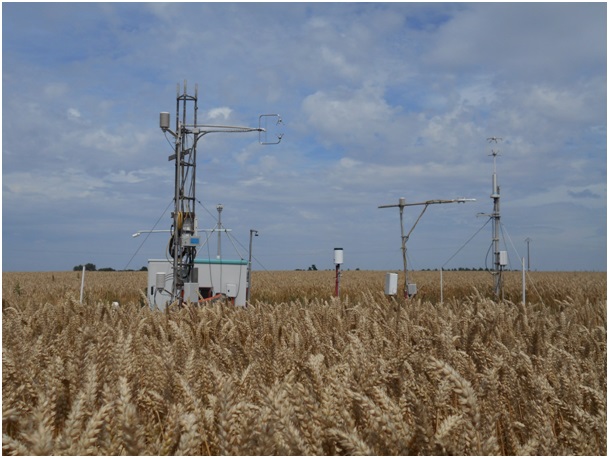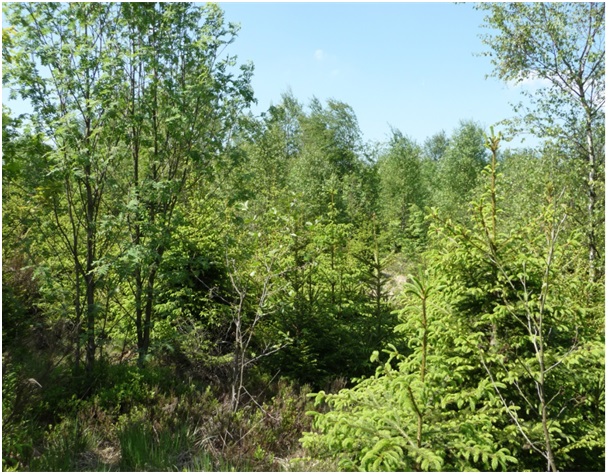2013-2020 | 8 partenrs – with 3 Scientists | € 800.000
ICOS – WB (Integrated Carbon Observation System – Wallonia-Brussels)
The Integrated Carbon Observation System, ICOS, is a European Research Infrastructure (ESFRI) that aims to quantify and understand the greenhouse gas balance of Europe. Monitoring stations providing long-term observations are and will be established in an oceanic, atmospheric and ecosystem network.
In Belgium, ICOS has developed an ecosystem network of six terrestrial observatories (three in Flanders, three in Wallonia) over crops, forests and greenlands and two ocean stations.
ICOS PROJECT OBJECTIVES – Presentation EN – Présentation FR
Climate change is one of the most critical issues to which humanity will be faced in the coming decades. It is extremely likely (IPCC, 2013) that the measured increase in global temperatures is due to the increase in the greenhouse gas (GHG) into the atmosphere due to human activities.
Natural ecosystems reabsorb about half of the carbon dioxide emitted by anthropogenic emissions : they behave as carbon sinks. In their absence, atmospheric CO2 concentration would grow twice as fast. However, processes involved are not well understood and it is not known if, in the future these sinks will increase, decrease or decay. It is thus necessary to better understand mechanisms of greenhouse gas emission and absorption by ecosystems and their long term changes..
In this context, ICOS project has the following aims :
- establish an integrated, long term, CO2 and GHG observation infrastructure at European scale ;
- determine CO2 and GHG fluxes from observations and to relate them to emission and absorption processes.
FLUX TOWERS
Flux towers are at the heart of terrestrial observatories. They measure fluxes with the eddy covariance method, which is based on an atmospheric turbulence analysis. This technique requires the capture and treatment of 300.000 measurements every half hour. Computed on several decades, these fluxes are representative of the net flux of an ecosystem of several hectares and reveal the budget of all processes at work in the ecosystem.
Flux responses to climate, management and climatic anomalies are then analyzed. These measurements are complemented with micrometeorological measurements in order to characterize climate conditions in which the fluxes occur. Extensive biomass samplings are made to follow up biomass dynamics (stems/trunks, leaves, fruits, etc.) as well as carbon and nitrogen content.
LONZÉE
TERRESTRIAL OBSERVATORY, 2004
SITE : 4 year rotation, typical of central Belgium. Eddy covariance measurements at 3 m height.
MICROMETEOREOLOGIC STATION : Follow up of net CO2 flux ecosystem exchange, impact on fluxes of climate, species and crop management . Crop and rotation carbon budget.
COMPLEMENTARY MEASUREMENTS : Intensive biomass follow up, soil respiration (autotrophic and heterotrophic discrimination), soil carbon content, NDVI, PRI, nitrogen deposition, VOC fluxes, N2O fluxes
Part of CARBOEUROPE network.
Site upgrade and integration in ICOS network in 2014.
JALHAY
TERRESTRIAL OBSERVATORY, 2007
SITE : Spruce forest cut (1996) and reforested (1998) with a mix of deciduous species.
SITE SPECIFICITY: Follow up of source and sink dynamics during forest growth after reforestation. Spruce – deciduous succession.
LONG TERM RESEARCHES: Evolution of nutriments losses and deposition, DOC losses and concentration in soil solution, losses at the outlet.
COMPLEMENTARY MEASUREMENTS: Soil respiration, soil carbon content, nutrient return, biogeochemical processes, wood mineral element content, critical load, soil exchangeable elements, litter decomposition, biological soil quality indicators.
Part of CARBOEUROPE network.
Upgrade and integration in ICOS in 2016.
VIELSALM
TERRESTRIAL OBSERVATORY, 1996
One of the longest and most complete data series in Europe.
SITE: Mature mixed forest (beech, Douglas fir, Spruce, 70 to 100 years).
Eddy covariance measurements, 52 m height.
COMPLEMENTARY MEASUREMENTS: Forest inventory, soil respiration, advection, site water balance, CO2 and 13CO2 diffusion in the soil, VOC fluxes, soil carbon content, nitrogen deposition.
Part of Euroflux and CARBOEUROPE networks.
Upgrade and integration in ICOS in 2014.
Ecosystems – Atmosphere Exchanges :
Marc AUBINET (coordinator)
Bernard HEINESCH (PI of Lonzée observatory)
Anne DE LIGNE
Crop Science Unit :
Tanguy MANISE
Earth and Life Institute (UCL) :
Caroline VINCKE (PI of Vielsalm observatory)
Plant and Microbial Ecology (ULg) :
Monique CARNOL (PI of Jalhay observatory)
ISSeP :
Benjamin BERGMANS
CRA-W :
Christian ROISIN
Liens :
www.icos-belgium.be
http://gaia.agraria.unitus.it/icos/
https://www.icos-ri.eu/
https://www.icos-cp.eu/



